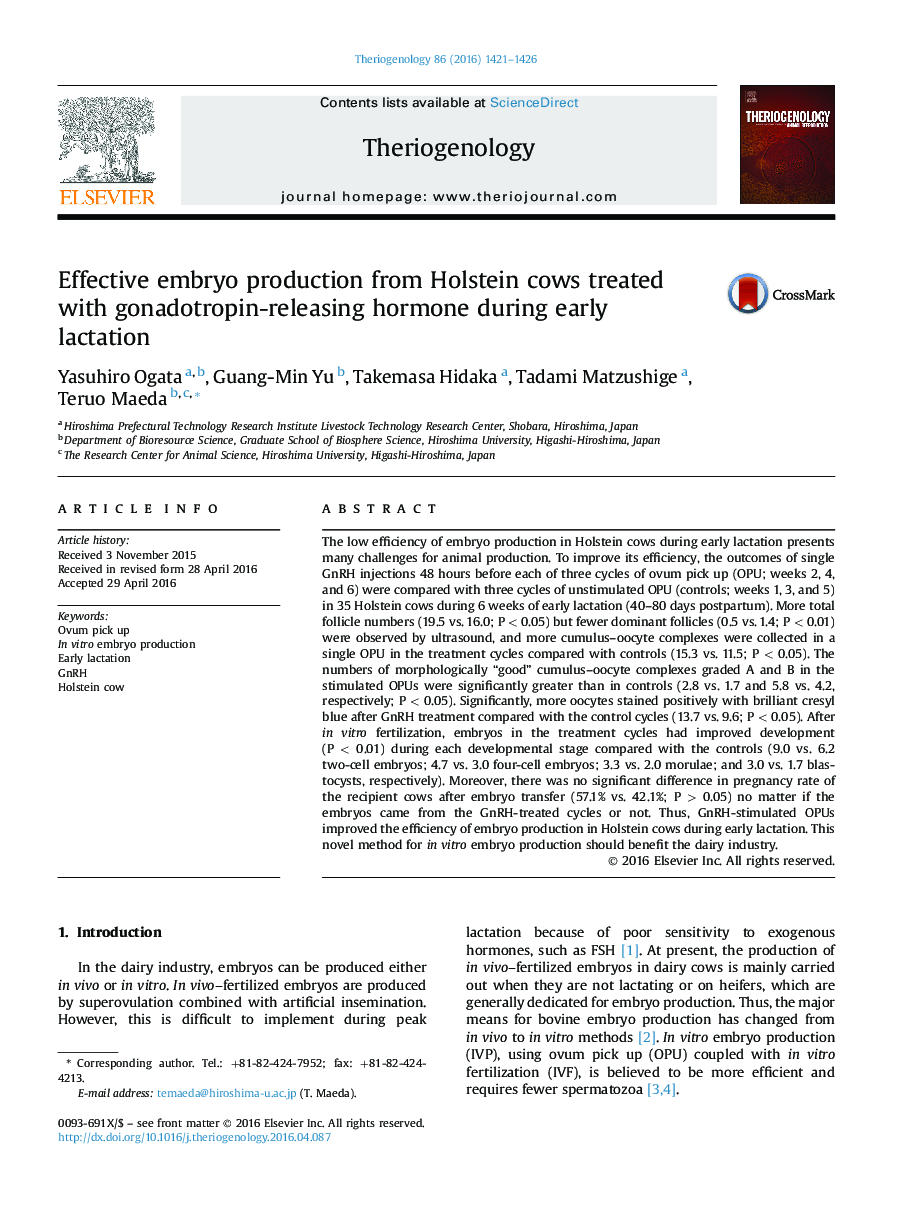| Article ID | Journal | Published Year | Pages | File Type |
|---|---|---|---|---|
| 2094677 | Theriogenology | 2016 | 6 Pages |
The low efficiency of embryo production in Holstein cows during early lactation presents many challenges for animal production. To improve its efficiency, the outcomes of single GnRH injections 48 hours before each of three cycles of ovum pick up (OPU; weeks 2, 4, and 6) were compared with three cycles of unstimulated OPU (controls; weeks 1, 3, and 5) in 35 Holstein cows during 6 weeks of early lactation (40–80 days postpartum). More total follicle numbers (19.5 vs. 16.0; P < 0.05) but fewer dominant follicles (0.5 vs. 1.4; P < 0.01) were observed by ultrasound, and more cumulus–oocyte complexes were collected in a single OPU in the treatment cycles compared with controls (15.3 vs. 11.5; P < 0.05). The numbers of morphologically “good” cumulus–oocyte complexes graded A and B in the stimulated OPUs were significantly greater than in controls (2.8 vs. 1.7 and 5.8 vs. 4.2, respectively; P < 0.05). Significantly, more oocytes stained positively with brilliant cresyl blue after GnRH treatment compared with the control cycles (13.7 vs. 9.6; P < 0.05). After in vitro fertilization, embryos in the treatment cycles had improved development (P < 0.01) during each developmental stage compared with the controls (9.0 vs. 6.2 two-cell embryos; 4.7 vs. 3.0 four-cell embryos; 3.3 vs. 2.0 morulae; and 3.0 vs. 1.7 blastocysts, respectively). Moreover, there was no significant difference in pregnancy rate of the recipient cows after embryo transfer (57.1% vs. 42.1%; P > 0.05) no matter if the embryos came from the GnRH-treated cycles or not. Thus, GnRH-stimulated OPUs improved the efficiency of embryo production in Holstein cows during early lactation. This novel method for in vitro embryo production should benefit the dairy industry.
